Back Top 10 things to see and do in the Nalón Valley

Top 10 things to see and do in the Nalón Valley
The Nalón Valley treasures within a few kilometres remarkable natural and scenic beauties, as well as an outstanding cultural, historical and industrial heritage. Come and discover it!
More than a thousand years ago, a king fell in love with this valley. It is said that he was captivated by the lushness of its forests and the greenery of its landscapes, the tranquillity of the place and the friendliness of its people. But Aurelius I, the fifth monarch of the Asturian kingdom, was not the only one to have been a staunch supporter of this place throughout history.
Long before the king, in prehistoric times, and long after, until today, thousands and thousands of human beings have been fascinated by the many attractions and discoveries that the Nalón valley, crossed by the river after which it is named, has to offer. A river, the Nalón, which holds the record and the honour of being, with its almost 160 kilometres, the longest in the Principality of Asturias and the longest in the Cantabrian mountain range, treasuring, moreover, in its fertile basin, one of the purest and highest quality coal reserves in the world.

Within a few kilometres, the Nalón valley has a Biosphere Reserve, the Redes Nature Reserve; numerous mountain and hiking routes; prehistoric sites; strategic spots in its surroundings with impressive panoramic views, both of the valley and of a large part of Asturias; hermitages with endearing legends, with precious artistic treasures, and even the tomb of a king; kilometres and kilometres of river paths; mining landscapes of yesteryear recovered for leisure and sport; a succession of bridges with precious stories; a trilogy of mining museums unique in Spain; literary figures of the stature of Armando Palacio Valdés, among others, and the highest density of Festivals of Tourist Interest in the whole of Asturias. And all this, just for starters?
A leisurely tour, with time for all the stops you feel like, observing in detail, enjoying every moment, will take you to a world of natural, scenic, historical, human and technological wonders.
From here we invite you to travel through the Nalón Valley as you have never done before!
The 10 best things to see and do in the Nalón Valley
The Redes Natural Park, an example of authenticity and scenic beauty
Formed by the councils of Caso and Sobrescobio, the Redes Natural Park was declared as such in 1996, and a few years later, in 2001, it was recognised as a Biosphere Reserve by Unesco.
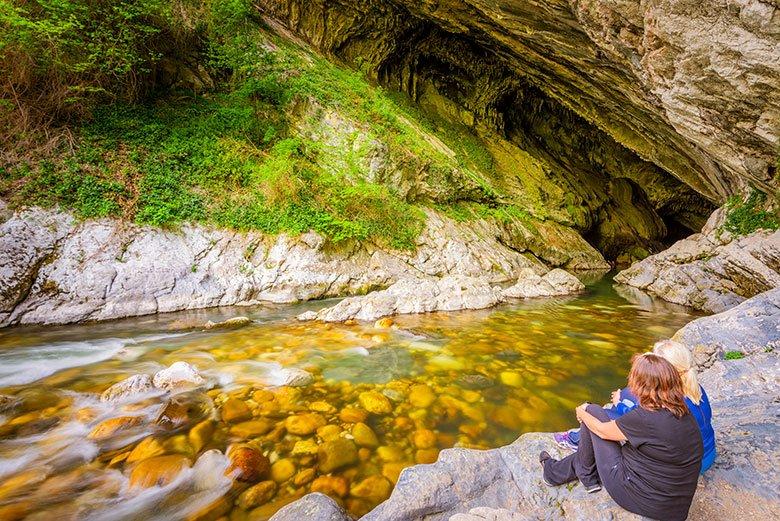
Both distinctions give you an idea that you have arrived at one of the most natural and environmentally rich places in Asturias. Glacial and karstic formations, mountains, pasture fields, forests... In Redes you will find everything and more, in a harmonious ensemble of beautiful contrasts and a great wealth of trees (beech forests, sessile oak, etc.), botany and fauna (bears, wolves, chamois, deer, etc.).
Imposing peaks of notable altitude such as Retriñón, Peña'l vientu, Cantu l'Osu or Tiatordos, the highest being that of Rapaína, at 2002 metres. Rivers whose action gives rise to open valleys that form large meadows or impressive limestone gorges, such as the Alba river or the Arrudos river - both well known by hiking enthusiasts.
Or places as emblematic from a natural, geological and human point of view as the Brañagallones meadow, at an altitude of over 1,200 metres, and easily accessible from the village of Bezanes.
And of course, dozens of beautiful villages with great ethnographic, historical, livestock or social value.
Not forgetting that in this Natural Park, specifically atthe source of La Nalona , the Nalón River, one of the most emblematic and historic rivers in the whole of northern Spain, has its source.
So, nature, mountain and hiking lovers have one of their paradises in Redes!
Under the intelligent influence of Armando Palacio Valdés
The Nalón valley has always been a territory prone to intelligence. Hundreds of characters throughout its history have been born and/or developed their activity, or have been inspired by its many places and moments. Because above all, the Nalón Valley is a space that deeply mobilises emotions, ideas and utopias.
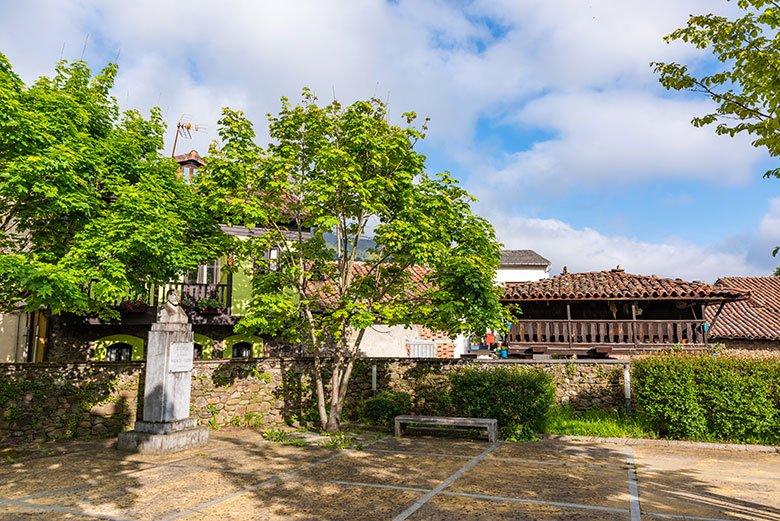
One of these important figures was born in a village in Laviana, called Entrialgo. We are talking about the writer Armando Palacio Valdés, whose birth house is preserved in magnificent condition, maintaining many of its original elements, and today converted into a museum about the life and work of the author of La Aldea Perdida (The Lost Village). This house-museum also recreates the historical and human context in which the writer lived, as well as curious episodes of his life, such as his summers in Capbreton, in France, where he was a much appreciated and recognised personality.
Entrialgo still preserves the charm of a rural corner, with traditional houses, granaries, and with the bust of D. Armando Palacio Valdés in the vicinity of his birthplace. There are also places in the surrounding area where you can taste the best gastronomy of the area.
There is also a dramatised route whose protagonists are some of the characters from La Aldea Perdida, who, while interacting with tourists, show them the Asturias of the late 19th and early 20th centuries. This route also runs along a beautiful path that links Entrialgo with Villoria, another historic village in La Rioja.
Laviana and its coal trails
Laviana is one of the 5 charismatic councils that make up the Nalón valley. Its history, its landscapes, its villages, or its landscape, among other aspects, make Laviana a different universe. The agricultural, livestock and mining activities have marked its life, and its physical and human geography.
Laviana is also an example of the recovery of landscapes which once housed mining exploitations and which today are ideal for leisure and sport, mainly hiking and cycling.

Under the slogan Senderos del Carbón (Coal Trails), you will find a series of trails suitable for mountain biking and hiking, which pivot around the Picu La Vara, and which allow you to do - at your free choice - shorter or longer routes, with different levels of difficulty. The landscapes are always marvellous. Without going any further, and as an example of what you can enjoy, on one of the benches located very close to the geodesic vertex of Picu La Vara, at a glance and as a panoramic sweep, you will contemplate in the same visual sequence Peña Mea, Peñamayor and the Picos de Europa, the bridge of La Chalana and Puente d'Arcu... A spectacle of nature and history!

And among all these well-considered trails is the Flow Trail of Laviana, a unique descent in Spain, built in a sustainable way and specially designed for mountain biking. There are three and a half kilometres of circuit - the first one approved in Spain - with countless bends, turns, jumps, speed bumps and cut-offs, in other words, pure "flow".

The Flow Trail is located in the Campa la Tazá, at the start of routes 1 and 4 of the Coal Trails, on Mount Carrio. Right at the beginning of the route, a wooden mouth simulates the entrance to a mine gallery, as a tribute to the mining past of the council, and to highlight that both the Coal Trails and the Flow Trail are designed in a sustainable way, recovering the old paths that the miners used to take to transport the coal after its extraction. And in the surroundings you will always find strategically placed benches to enjoy the views, to take a break along the way, or to enjoy the performances of the virtuosos who come to this MTB circuit.
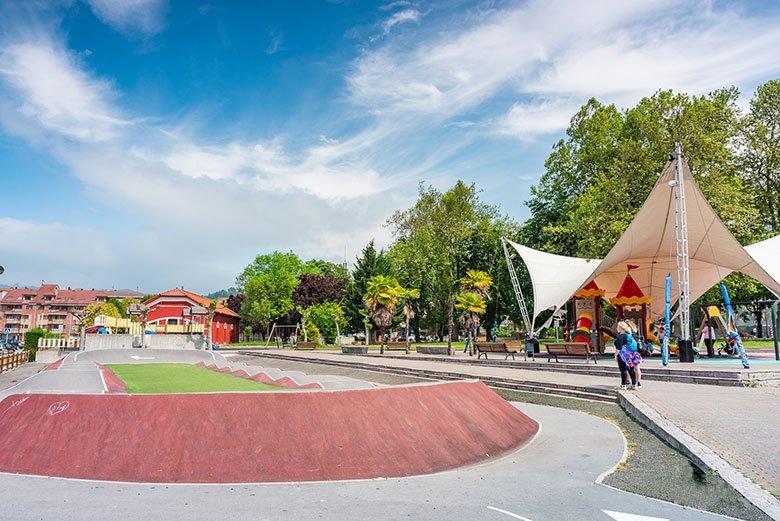
But also, if you want to continue having fun with your bike, either as a spectator or practising your favourite sport, in La Pola Llaviana/Pola de Laviana, you have two pump tracks - closed asphalt circuits, whose layout is made to enjoy with your bike or any other gadget on wheels -. One of them is enormous and is next to the fluvial path, and there, between the mine's castles and the murmur of the Nalón, the sporting emotion is assured. The other is smaller and is in the centre of the village, in the surroundings of the children's playground.
You will realise that the slogan "Laviana, Territorio Bike" is totally deserved!
Also, don't forget that La Pola Llaviana/Pola de Laviana is always a very lively and festive town, with one of the highlights of its leisure calendar being the Descenso Folklórico del Nalón, which has its own Paseo de los Vencedores in the centre of the town, and is a Fiesta of National Tourist Interest.
The Nalón river path, one of the largest in Asturias
The river Nalón, in its valley, is the protagonist of beautiful landscapes and an incentive for the enjoyment of many pleasant moments and leisure activities.
There is currently a river path that starts in Puente d'Arcu, passing over the bridge of La Chalana, in Laviana, to reach Lada, in Langreo. There are 14 kilometres of river path which is not only an ideal place for the inhabitants of the valley to stroll, but also for lovers of nature activities who come from different latitudes.

The river path runs parallel to the river and offers a variety of landscapes: lush forests, ideal spots to rest by the river, historic river mouths, mine castles on the horizon, medieval bridges and others that tell you about episodes of the industrial revolution, museums in the vicinity, villages and towns... And you are on your own, with your family, with your friends, with your pets, with your bike... Moments of freedom in the middle of nature and very close to beautiful towns, full of atmosphere with their terraces, bars, restaurants, cider houses, etc.
And the good thing is that you don't have to do the whole route if you don't feel like it, as the path has different starting and finishing points... So you can design your own tailor-made river walk!
A succession of bridges with history
You could read the history of the Nalón Valley in the succession of bridges that mark the river Nalón (and some of its tributaries), from its source to Langreo, passing through Caso, Sobrescobio, Laviana and San Martín del Rey Aurelio.
Precisely one of these unique bridges, one of those that mark the character of a village or an area, is Villoria, which stands over the river Villoria - a tributary of the Nalón -, and which is one of the best preserved medieval bridges in Asturias, with its original cobbled paving, and which is believed to have been the site of an earlier Roman bridge.

Likewise, one of the architectural jewels on the river Nalón is Puente d'Arcu, which also gives its name to the village in which it is located. This medieval bridge - to which some attribute a Roman origin - dates back to the 12th century and was the link between the main access routes to Laviana: that of Tarna and that of Aller. Its two unequal semicircular arches, and also some pillars very close to it, vestiges of an old bridge of the mining railway in the area, attract a lot of attention.
Just two kilometres from La Pola Llaviana/Pola de Laviana, Puente d'Arcu is nowadays a place for recreation and leisure, to take the air and sun, on the very banks of the river Nalón.
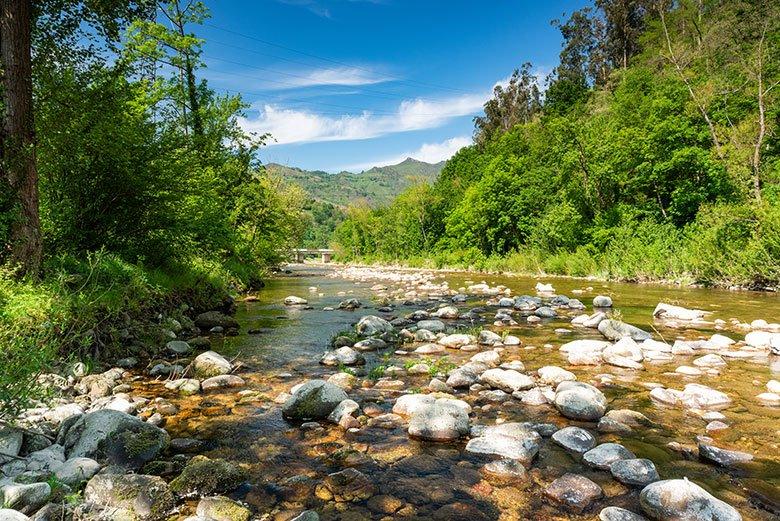
Another of the charismatic bridges over the Nalón is La Chalana, named after the boat that used to cross from one bank of the river to the other to connect the parishes of Entrialgo, Villoria and Tolivia. That was until the beginning of the 20th century, when successive wooden bridges began to be built, which ended up being devoured by the floods of the Nalón, until the concrete bridge we know today was built in the 1940s.
The area around La Chalana bridge has always been a place for relaxation and fun, both for locals and foreigners, and for more than half a century it has been the epicentre of the Descenso Folclórico del Nalón, declared a Fiesta of National Tourist Interest, and which now has its own Paseo de los Vencedores in the centre of La Pola Llaviana/Pola de Laviana.
Closely linked to the mining tradition of the Nalón valley is the Puente de La Sota, which joins the town of Barredos with the area around the Carrio shaft, and which was rebuilt a few years ago, taking as a reference the old bridge over which coal was transported. Today it is a pedestrian bridge, in the surroundings of the river path and right next to the La Sota mine shaft, where you can see the history of a mining tragedy.
And as you go downstream, the bridges follow one after the other, bearing witness to a unique cultural and industrial heritage in this valley of wonders.
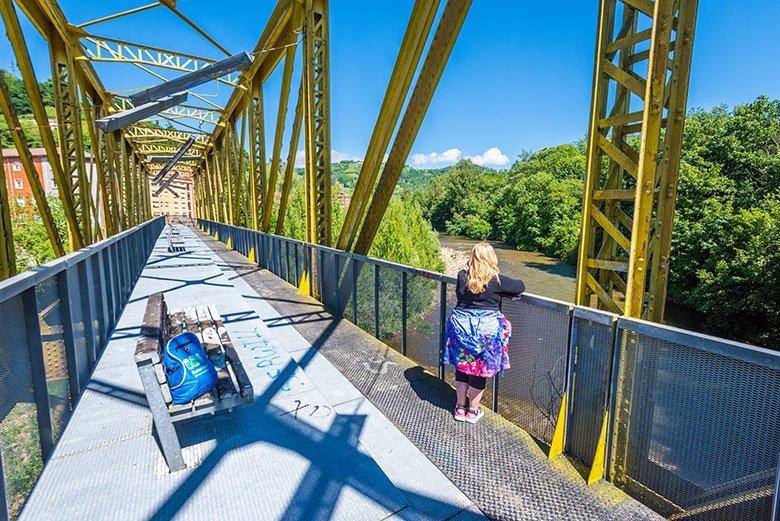
Iron bridges, with striking and artistic metal structures, which represent the life of another time: Los Gallegos Bridge, La Oscura Bridge, Miramar Bridge, Carrocera Bridge, etc. Historical bridges and others of recent construction and of striking design, such as the Serrallo footbridge. And all of these are in San Martín del Rey Aurelio.
And the bridges also come to life in Langreo - such as La Maquinilla and Los ingleses - where the Nalón river bids farewell to its valley.
A trilogy of mining museum spaces
The Nalón Valley brings together the largest number of mining areas set up as museums in the whole of Asturias, and most probably in the whole of Spain, and all of them are just a few kilometres away from each other, and with absolutely complementary activities and attractions.
They are three facilities that articulate a true trilogy of history, culture and industrial mining heritage in Asturias.
The Museum of Mining and Industry (Mumi) has been open to the public since 1994, with a constantly evolving and expanding collection and spaces, including a mining train.
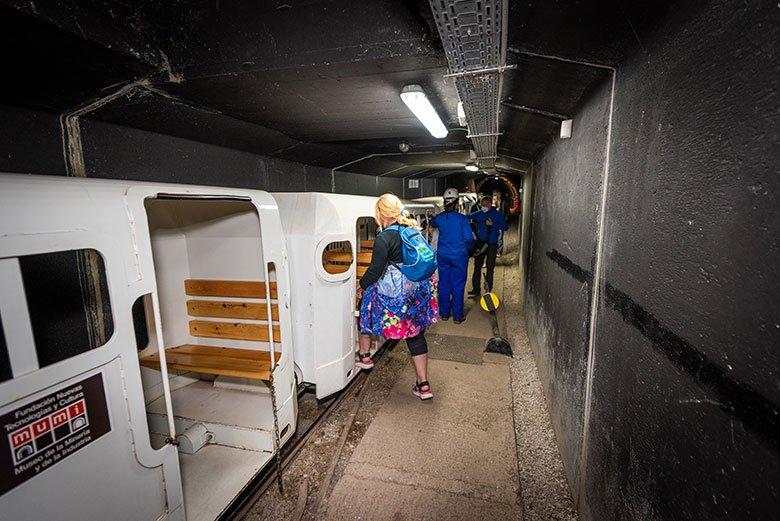
Built on the old slag heap of the historic San Vicente shaft, it is located in the town of L'Entregu/El Entrego, in San Martín del Rey Aurelio, and is one of the best and most complete spaces on the industrial, technological and social history of mining.
For its part, the Valle de Samuño Mining Ecomuseum was inaugurated in 2013, after the recovery of the industrial heritage of the surroundings of the mining town of La Nueva, in Langreo. It was the San Luis shaft, drilled between 1928 and 1930, that inspired this eco-museum project. In fact, it is a Historic Site that represents one of the most beautiful and unique examples of the industrial heritage of the Asturian coalfields. It also has its own mining train, which travels along the old route that once made the coal.
In Samuño you will live a unique experience around a mine, a train, a valley and a village!

On the other hand,in 2015, the Pozo Sotón, also in San Martín del Rey Aurelio, launched a unique tourist project in the world: the possibility for visitors to walk through its galleries and feel like "miners for a day", chopping coal or drilling a gallery, guided by real miners. At a depth of more than 500 metres and travelling through part of the 140 kilometres of galleries that make up this Asset of Cultural Interest, the experience will be unforgettable!
In the footsteps of a king
The Nalón valley also played a leading role in the ancient kingdom of Asturias in the Middle Ages. And there are many reminiscences that remain from that time, including the name of the council of San Martín del Rey Aurelio, named after the fifth king of the Asturian monarchy, Aurelio I.
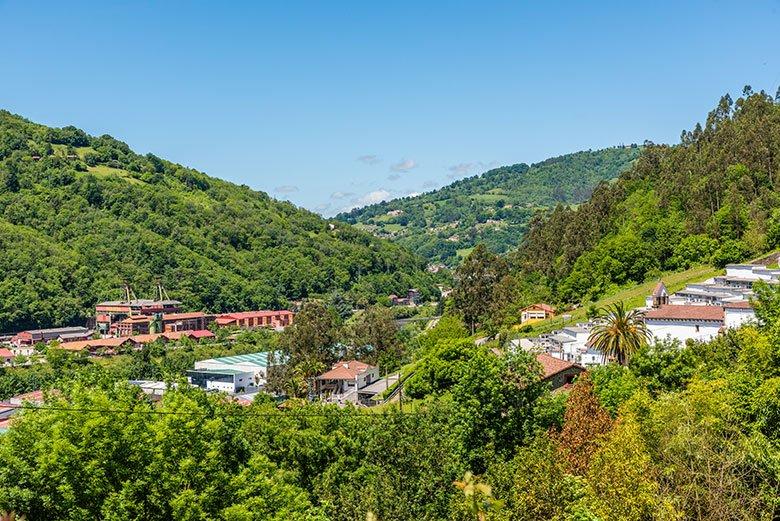
Everything suggests that Aurelio, a hunting enthusiast, was fascinated by the area and its inhabitants, and decided to establish his residence in the vicinity of what is now Sotrondio, the capital of the council. As a testimony to that period, a few kilometres from this village stands the hermitage of San Martín de Tours, where the king's tomb is located, and the locals still say that his palace - where an old ancestral home now stands - was located just a few metres away. Other sources say that the palace may have been a little further up from the hermitage, in a place known as La Baraosa.

And so, amidst legendary and epic echoes, the figure and mark of King Aurelius lives on.
The hermitage of El Carbayu, between history and legend
The hermitage of El Carbayu, in Langreo, is one of those privileged locations for contemplating the Nalón Valley. And it seems that the choice of this beautiful vantage point where it is located was not a coincidence...
According to legend, the temple was to be built in a corner known as L'Armá, but one fine day, when the workers arrived to begin their work, the materials had disappeared, their food had turned to stone, and after seeing a light, the virgin appeared on a carbayu (this is the name given to an oak tree in Asturian) in the current location, from where the whole valley can be seen.

The current hermitage, in Baroque style, was built during the 18th century, and on its façade there is a small niche that houses an image of Nuestra Señora del Carbayu. Prior to this construction, there are indications that a Romanesque temple may have existed there, as evidenced by the materials that have been found in the surrounding area.
Since ancient times, pilgrimages to the mountain of El Carbayu have been common, and they still continue today. So much so that nowadays a pilgrimage with procession is held in this Sanctuary on the 8th of September, a celebration of great tradition that has been declared a Festival of Tourist Interest in the Principality of Asturias.
It is undoubtedly a magical place, with splendid views of the Nalón valley and the centre of Asturias!
A number of places with splendid views
The Nalón valley is one of the places with the most natural viewpoints with good views on its slopes.
Often narrow and canyoned, it is not at all difficult to climb the surrounding mountains to get spectacular and unusual views of the course of the river Nalón, the landscapes it creates, and the villages on the riverbanks or that slope down its hillsides.
In the Redes Natural Park, specifically in Sobrescobio, there is the Campiellos Viewpoint, at the end of the accessible Camín del Rebollal path. And there is also the Madalena viewpoint, which you can reach via a pedestrian path, near Tañes, in Caso.
Another of those places to have a privileged view of the Nalón valley and some of the most beautiful spots that the river draws is the picu La Vara and its surroundings, in the council of Laviana.
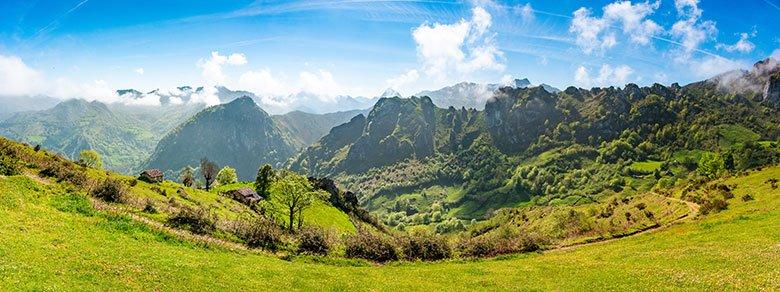
Also in the council of Laviana, the ascent to the Campa Felguera and the Campa itself gives us an idea of the immensity and richness of the landscape of this valley, its tributaries and all its mountainous surroundings.

But the list is very wide and varied: Colladiella, Mayau Solís, Campa L'españal or La Baraosa, in San Martín del Rey Aurelio. Or El Carbayu, in Langreo, among others.
In Langreo, you can also do the route to the lakes of Braña l'Río, a 10.5 km route with a 300 m ascent, whose jewel in the crown are the lakes that were formed in what used to be an open-cast mine. The route lasts about 3 hours (round trip) and offers beautiful and surprising landscapes.
A whole world of roads, paths and trails to reach incomparable views, and that will bring you a torrent of sensations in this valley of the Nalón!
A festive territory if ever there was one
The Nalón valley is a friendly, welcoming and festive area. In just a few kilometres it has the highest density of Festivals of Tourist Interest in the whole of the Principality. No more and no less than 6 unmissable dates for leisure and fun.
In Laviana, in the middle of August, the Descenso Folklórico del Nalón is held, declared a Festival of National Tourist Interest; in Caso, specifically in El Campu, and also in August, the famous Certamendel quesu Casín, a Festival of Regional Tourist Interest, and a tribute to one of the oldest known artisan cheeses.
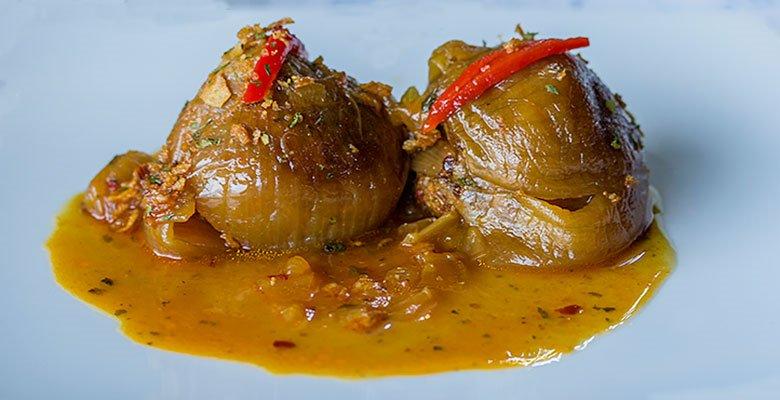
The list of culinary events of relevance and quality continues, and the gastronomic autumn comes alive with the Fiesta de les Cebolles Rellenes, in L'Entregu/El Entrego, where this dish was also invented; los Nabos, in Sotrondio - whose tradition dates back to the reign of Aurelio -, and the Pimientos Rellenos, in Blimea. All three are of Regional Tourist Interest and all three take place in the council of San Martín del Rey Aurelio. And the cherry on top of this list of quality-certified festivals is the Gastronomic Festival "Su Excelencia la Fabada", in La Felguera, in the council of Langreo.
Undoubtedly, a generous valley when it comes to respecting traditions, culture and festive and culinary inventions.
So the Nalón valley is one of the tastiest, most playful and hospitable valleys you can find!
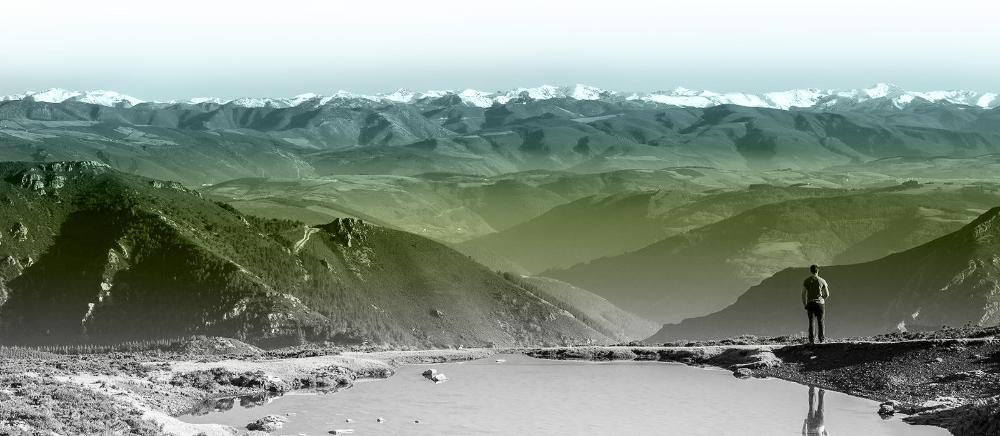
Subscribe to our newsletter and take advantage of offers, discounts, and news
Subscribe




